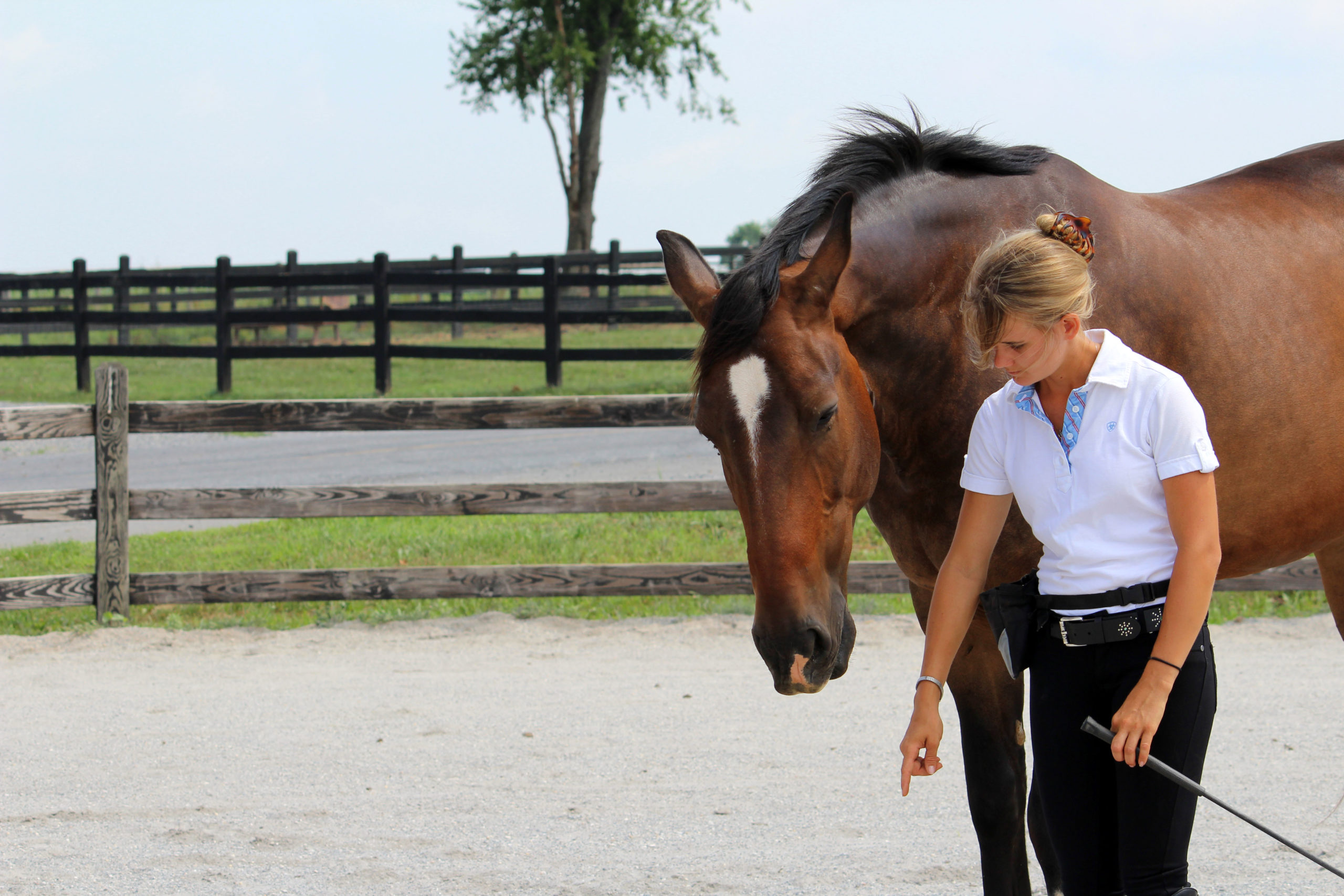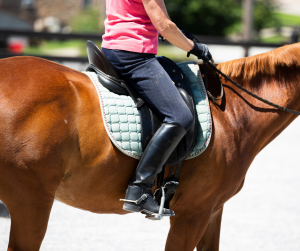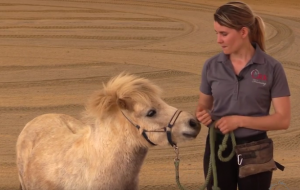You use them all the time.
Some you are aware of, such as when you press your leg against your horse’s side to ask him to walk forward or put pressure back on the rein to ask for a slowing down.
Others you are unaware of.
Perhaps you always shorten the reins before a canter transition, or you make your hips crooked before a leg yield.
But your horse knows your consistent signals, even if he does not always respond in the way you wish.
Our signals to horses are called “cues” in horse training. They are recognizable triggers for behavior. They can be big or small, they can be movements or sounds, but they are a base for our communication with our horses.
The better we understand how cues work and become more conscious of our cues, the easier we can communicate with our horse.
Click play below to watch the video and learn more!














9 Responses
You’re going to think that I’m totally silly but I taught my horse “gimme kiss” where he gets a kiss on his muzzle when he reaches out. He then gets a treat. Now he does this to everyone he encounters, looking for a treat! I know that it’s kind of corny but everyone loves it and they understand what he means. It’s just another way of communicating with my precious little pony who has no verbal skills.
That’s so sweet! So he has an intentional cue and has learned that the behavior earns him a reward. Thanks for sharing!
To try and avoid unwanted or bad behaviour all together I put my horses treats in her feed bucket. I prefer not to hand feed. I always took my carrots and apples in a plastic bag. The only problem now is when she hears the sound of a plastic bag she thinks she’s getting treats. I’m trying to take them in a small bucket now.
I enjoyed this video and it made me realize, as you said, how sometimes we reinforce unwanted behaviour without even knowing it.
How funny. Horses are very intelligent and it is interesting sometimes what associations they make based on our habits and behaviors. Glad this video was helpful for you!
A fun and useful Cue I have taught my gelding is the “OK ” and pointforo something to eat.
when we are going for a walk in hand down the road or riding, If I see something good ahead for him to eat, I will stop, point, and then say OK, He will stand with head up untill the OK is given, then he dives down for the chunk of grass or what ever it it on the ground for him to munch… for moving on from the eating ,it is littlerly
the words ” 1, 2 3 pause head up” and he will lift his head and we walk on…all cues that work and makes it fun. no tugging on the lead rope or pulling,
I currently ride western on my AQH but learned to ride on an English Saddlebred. I am now being told by friends that I keep my reins too taut. They have me dropping my reins so that there is quite an arch from the bit to horse. It feels uncomfortable to me and looking at this video that’s not how your reins are positioned. Is this one of the differences between English and Western. I’m confused.
I have also taught my horses verbal cues as I have grandchildren that I hope will ride with me when they get older. I want each of my horses to respond to my verbal cue if I have a child on them so I can stop them if needed from the ground. I hope you continue explaining the common cues in upcoming videos as I feel they are not taught maybe well enough in lessons and while they may differ some between riders I feel there are some universal ones too.
My favorite cue with my mare is when I call her name and extend my arm. She comes – sometimes at a trot – and when she reaches me, she touches my outstretched hand with her nose. Then we walk off together, shoulder to shoulder. No halter. No lead rope. I love it!
I found your post on “Cues and How We Communicate with Horses” on the Horse Class blog to be informative and insightful. The importance of clear and effective communication between horse and rider cannot be overstated.
Understanding and utilizing cues in horse training is crucial for building a strong partnership and achieving desired results. As you mentioned, cues can be subtle or explicit, and it is essential to be consistent in their application to avoid confusion and aid in the learning process.
In some instances, horses may exhibit anxiety or nervousness, which can hinder their ability to understand and respond to cues effectively. This is where the role of calming supplement for horse comes into play. These supplements, formulated with natural ingredients, can provide support for anxious or stressed horses, promoting a calmer state of mind and enhancing their receptiveness to training cues.